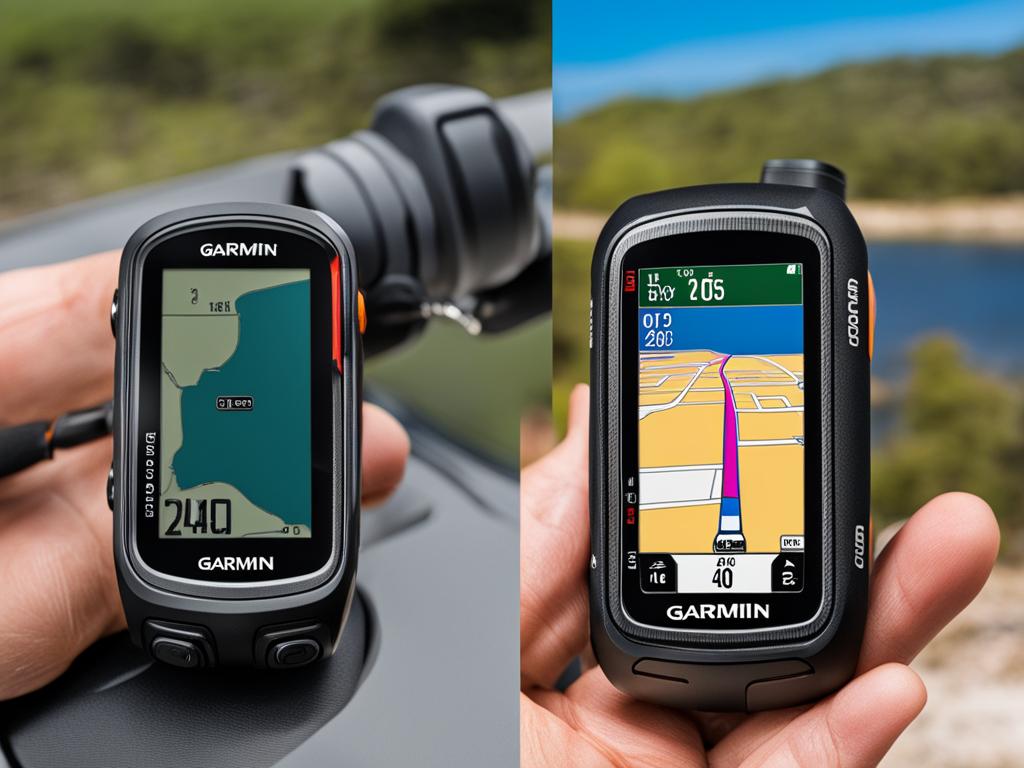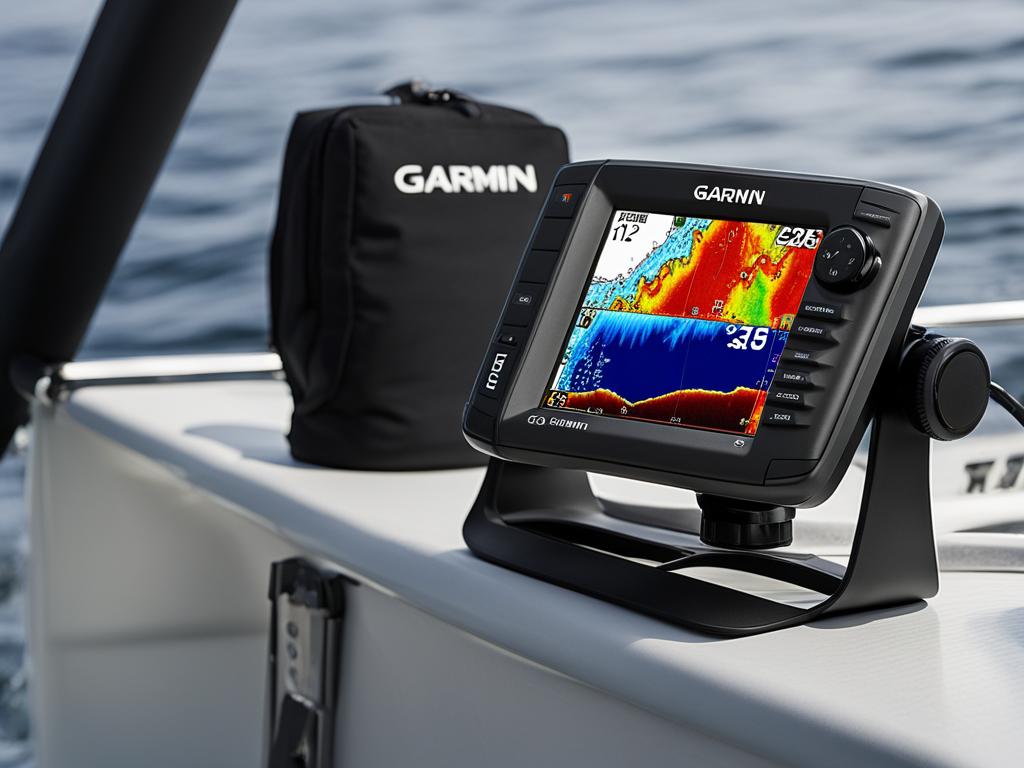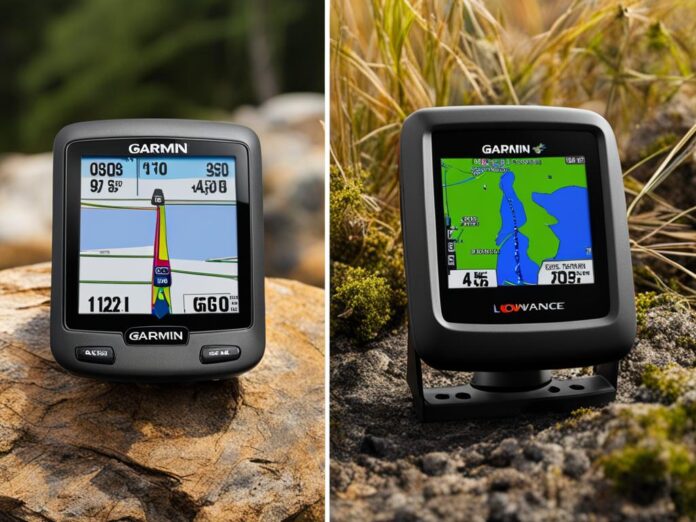As an Amazon Associate, I earn from qualifying purchases
In this article, we will compare the key features and performance of Garmin and Lowrance, two popular brands of marine electronics. Whether you’re a professional angler or a recreational boater, having the right navigational tools is essential for a smooth and successful journey.
Garmin and Lowrance are renowned for their cutting-edge fishfinders, chartplotters, and GPS technology. By understanding their similarities and differences, you can make an informed decision on which brand is the best choice for your marine navigation needs.
Key Takeaways:
- Garmin and Lowrance are top brands when it comes to marine electronics.
- Comparing the features and performance of fishfinders, chartplotters, and GPS technology helps in choosing the right brand.
- Consider factors like screen size, performance, expansion options, and price before making a decision.
- Both Garmin and Lowrance offer a range of features to enhance your boating experience.
- Ultimately, the best choice depends on your specific requirements and preferences.
Key Factors to Consider When Choosing Between Garmin and Lowrance
When comparing Garmin and Lowrance for your marine electronics, there are several key factors you should consider to ensure you make the best choice for your boating needs.
Screen size: One of the first things to consider is the screen size of the fishfinder or chartplotter. The screen size should be suitable for your boat and mounting location, allowing for easy visibility and readability when navigating the waters.
Performance: Another crucial factor is the performance of the unit. You need to consider the maximum depth you want to be able to see fish, as this will determine the type of transducer and sonar technology required. Whether you’re fishing in shallow waters or exploring deeper depths, choosing a unit with the appropriate performance capabilities is essential.
Expansion: It’s also important to think about expansion and future-proofing your system. Consider whether you may want to add additional functionalities in the future, such as radar, sonar, or AIS. Choosing a unit that offers expansion options ensures that you can easily upgrade and enhance your boating experience as your needs evolve.
Price: Lastly, price is a crucial factor for most boaters. Determine your budget and compare the prices of Garmin and Lowrance units that meet your requirements. This will help you find the best choice within your budget without compromising on quality and features.
By considering these key factors – screen size, performance, expansion, and price – you can make an informed decision between Garmin and Lowrance to find the perfect marine electronics for your boating adventures.

“When choosing between Garmin and Lowrance, it’s important to prioritize your individual boating needs and preferences. Consider what features are most important to you and how they align with your budget. It’s worth investing time and research to find the perfect marine electronics for your vessel.”
– Boating Enthusiast
Common Specs and Features to Understand
When comparing Garmin and Lowrance marine electronics, it’s important to familiarize yourself with their common specifications and features. These include:
- Touch Screen Interface: Some models from both brands feature touch screens, allowing for easy navigation and control. However, the usability of touch screens may vary depending on the boat type and conditions.
- Transducer Type: Consider whether you prefer a transom mount or a thru-hull transducer. The choice will affect the image quality and the depth capabilities of your fishfinder.
- Transducer Frequency and Power: Understanding the frequency and power of the transducer is crucial. Higher frequencies provide more detailed imaging of shallow waters, while lower frequencies are better for deeper waters. The power of the transducer determines the maximum depth range.
- Charts and Mapping Features: Garmin and Lowrance work with different chart suppliers, such as Navionics and C-Map. It’s important to assess the benefits and availability of charts and mapping features offered by each brand.
- GPS Internal/External: Consider whether you want the GPS to be internal or external. Mounting location and signal strength should be taken into account when making this choice.
- Ease of Use: Ease of use is a key consideration, as you want a unit that is intuitive and user-friendly. It is recommended to try out the units in a store to assess their ease of operation.
| Feature | Garmin | Lowrance |
|---|---|---|
| Touch Screen | Available on select models | Available on select models |
| Transducer Type | Transom Mount, Thru-hull | Transom Mount, Thru-hull |
| Transducer Frequency | Varies by model | Varies by model |
| Transducer Power | Varies by model | Varies by model |
| Charts and Mapping Features | Garmin/Navionics | Supplier-based (Navionics, C-Map) |
| GPS | Internal, External | Internal, External |
| Ease of Use | Varies by model | Varies by model |
Garmin Fishfinders and Chartplotters
When it comes to fishfinders and chartplotters, Garmin offers a wide range of options to suit your boating needs. Their devices come in different screen sizes, ranging from 10 inches to 16 inches, providing you with ample viewing space for easy navigation. These screens are designed to deliver sharp images and vibrant colors, enhancing your overall boating experience.
In terms of depth capability, Garmin fishfinders and chartplotters are equipped with advanced sonar technology that allows you to explore the underwater world with precision. With models offering depth capabilities ranging from 50 meters using SideVu/ClearVu to over 300 meters with 1kW CHIRP Sonar, you’ll be able to spot fish and underwater structures with ease.
Networking and expansion options are another advantage of Garmin devices. They support various connectivity options such as NMEA2000, Ethernet, radar, sounder, and AIS, allowing you to expand your system and integrate additional components effortlessly. Whether you want to add radar for improved navigation or connect your fishfinder to other devices on your boat, Garmin has you covered.
Price is always a consideration when investing in marine electronics. Garmin offers a range of fishfinders and chartplotters to suit different budgets. The price range for Garmin products typically falls between $2700 and $7500, depending on the model and its features.
Let’s take a closer look at the pros and cons of Garmin fishfinders and chartplotters:
- Pros:
- Garmin/Navionics charts provide detailed and accurate mapping for precise navigation.
- Easy integration with Fusion audio systems, allowing you to control your music and entertainment directly from your Garmin device.
- Built-in 1kW sounder delivers exceptional fish-finding capabilities.
- Cons:
- Absence of a 9-inch screen size option, limiting flexibility for certain boat installations.
- Slightly steeper learning curve for some users due to the extensive features and customization options.
Overall, Garmin fishfinders and chartplotters offer a powerful combination of advanced features, reliable performance, and expandability. Whether you’re a serious angler or a recreational boater, Garmin devices can enhance your boating experience and help you navigate with confidence.

Lowrance Fishfinders and Chartplotters
When it comes to fishfinders and chartplotters, Lowrance offers a diverse range of options to suit different boating needs. These units are known for their reliability and affordability, making them a popular choice among anglers and boating enthusiasts.
Lowrance fishfinders and chartplotters come in various screen sizes, including 7″, 9″, and 12″. This allows users to choose the size that best fits their requirements and preferences. Whether you prefer a compact unit or a larger display for enhanced visibility, Lowrance has you covered.
One of the key considerations when choosing a fishfinder or chartplotter is its depth capability. Lowrance units offer impressive depth capabilities, ranging from 50m/75 Side/Downscan to over 300m with CHIRP Sonar technology. Whether you’re fishing in shallow waters or exploring deeper depths, Lowrance provides reliable and accurate depth readings.
Networking and expansion options are also important features to consider. Lowrance units support various networking technologies, such as NMEA2000 and Ethernet, allowing for seamless connectivity with other devices on your boat. Additionally, they offer compatibility with radar, sounder, and AIS systems, providing enhanced situational awareness and expanded functionality.
When it comes to pricing, Lowrance fishfinders and chartplotters offer excellent value for money. With a price range of approximately $2100 to $7500, Lowrance provides affordable options without compromising on quality and performance.
The Pros of Lowrance:
- Affordability: Lowrance units offer competitive prices, making them accessible to a wide range of boaters.
- Tactile Buttons: In addition to touch screens, Lowrance units feature tactile buttons, providing convenience and ease of use.
- Suitability for Shallow Water Fishing: Lowrance fishfinders and chartplotters are well-suited for shallow water fishing, allowing anglers to navigate and locate fish with precision.
The Cons of Lowrance:
- May Not Be Ideal for Deep-Water Fishing: While Lowrance units offer impressive depth capabilities, they may not be the best choice for those who frequently fish in depths exceeding 300m.
- Slower Processor Compared to Garmin: When compared to Garmin units, Lowrance units may have a slightly slower processor, which can affect overall performance and responsiveness.
| Screen Size | Depth Capability | Networking/Expansion | Price Range |
|---|---|---|---|
| 7″, 9″, 12″ | 50m/75 Side/Downscan to over 300m with CHIRP Sonar | NMEA2000, Ethernet, radar, sounder, AIS | $2100 to $7500 |
Comparison of Garmin and Lowrance
When comparing Garmin and Lowrance, several factors come into play. Screen quality is an important consideration, including resolution and color clarity. Ease of operation is another crucial factor, which encompasses an intuitive interface and customizable functions. Both brands offer 2D and 3D imaging capabilities, but it’s essential to note that the quality may vary between models. Mapping capabilities, including the availability of detailed charts and the option for live mapping, should also be compared.
To get a better understanding of the differences between Garmin and Lowrance, let’s explore each factor in more detail:
Screen Quality
The screen quality of a GPS device plays a significant role in user experience. Garmin and Lowrance offer displays with different resolutions and color clarity. While both brands ensure adequate visibility in different lighting conditions, Garmin may provide a slight edge in terms of sharper image quality and vibrant colors.
Ease of Operation
When it comes to ease of operation, both Garmin and Lowrance strive to provide user-friendly interfaces. However, some users may find Garmin devices to be slightly more intuitive, allowing for seamless navigation and quick access to essential functions. Lowrance devices also offer ease of use, but it may have a slight learning curve for users transitioning from other brands.
2D/3D Imaging
Both Garmin and Lowrance offer 2D and 3D imaging capabilities, allowing users to have a better understanding of the underwater landscape and fish behavior. However, the quality of the imaging may vary depending on the specific models and technologies employed. It’s worth researching and comparing the imaging capabilities of specific models to find the one that suits your needs and preferences.
Mapping Capabilities
Mapping capabilities are crucial for marine navigation, and both Garmin and Lowrance excel in this area. They provide access to detailed charts and maps, allowing boaters to navigate safely and efficiently. However, it’s important to assess the mapping features and sources provided by each brand to ensure they cover your preferred boating areas and offer the necessary level of detail. Additionally, the option for live mapping can greatly enhance your boating experience, so it’s worth considering this feature as well.
Overall, when comparing Garmin and Lowrance, it’s essential to evaluate the specific models and their performance in terms of screen quality, ease of operation, 2D/3D imaging, and mapping capabilities. By considering your individual boating needs and preferences, you can make an informed decision on which brand offers the best GPS technology for your marine adventures.
Note: The image above is for illustrative purposes only and may not reflect the exact models being compared.
Conclusion
When it comes to choosing the best marine electronics, fishfinder, chartplotter, and GPS technology, Garmin and Lowrance are two top contenders. Both brands offer a wide range of features and capabilities to enhance your boating experience. However, the final decision depends on your specific needs and preferences.
One crucial consideration is the screen size, which should be suitable for your boat and mounting location. Additionally, you should assess the performance of the units, such as the depth capabilities and the maximum range for fish detection. Expansion options, like adding radar, sonar, or AIS, may also influence your decision.
Price is another essential factor to consider, as it can affect the overall value for money. Both Garmin and Lowrance offer different price ranges, allowing you to find a product that fits your budget without compromising quality.
Ultimately, whether you choose Garmin or Lowrance, you can expect high-quality marine electronics that are reliable and trusted in the industry. By evaluating specific models based on your requirements and preferences, you can make an informed decision and find the best choice for your boating needs.
FAQ
What factors should I consider when choosing between Garmin and Lowrance?
When choosing between Garmin and Lowrance, important factors to consider include screen size, performance, expansion options, and price.
What are some common specifications and features I should understand?
Common specifications and features to understand include touch screen interface, transducer type, transducer frequency and power, charts and mapping features, GPS internal/external, and ease of use.
What are some pros and cons of Garmin fishfinders and chartplotters?
Pros of Garmin units include Garmin/Navionics charts, easy Fusion integration, and built-in 1kW sounder. However, a potential drawback is the absence of a 9″ size option and a slightly harder learning curve for some users.
What are some pros and cons of Lowrance fishfinders and chartplotters?
Pros of Lowrance units include affordability, the presence of tactile buttons in addition to touch screens, and suitability for shallow water fishing. However, they may not be ideal for deep-water fishing above 300m and have a slower processor compared to Garmin.
How do Garmin and Lowrance compare in terms of screen quality?
Screen quality, including resolution and color clarity, is an important consideration when comparing Garmin and Lowrance units.
What are some features I should look for in terms of ease of operation?
Ease of operation, including an intuitive interface and customizable functions, is another factor to consider when comparing Garmin and Lowrance units.
Do both Garmin and Lowrance offer 2D and 3D imaging capabilities?
Yes, both Garmin and Lowrance offer 2D and 3D imaging capabilities, but the quality may vary between models.
What should I consider when comparing mapping capabilities?
When comparing mapping capabilities, consider the availability of detailed charts and the option for live mapping.
